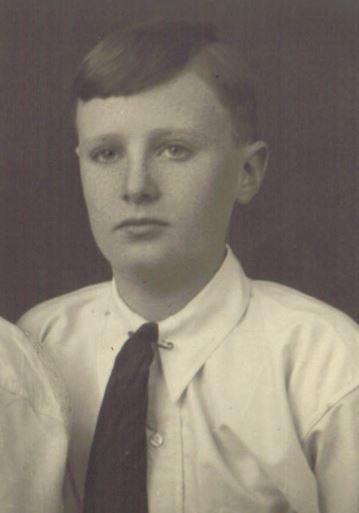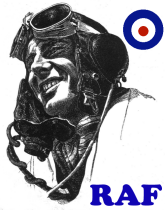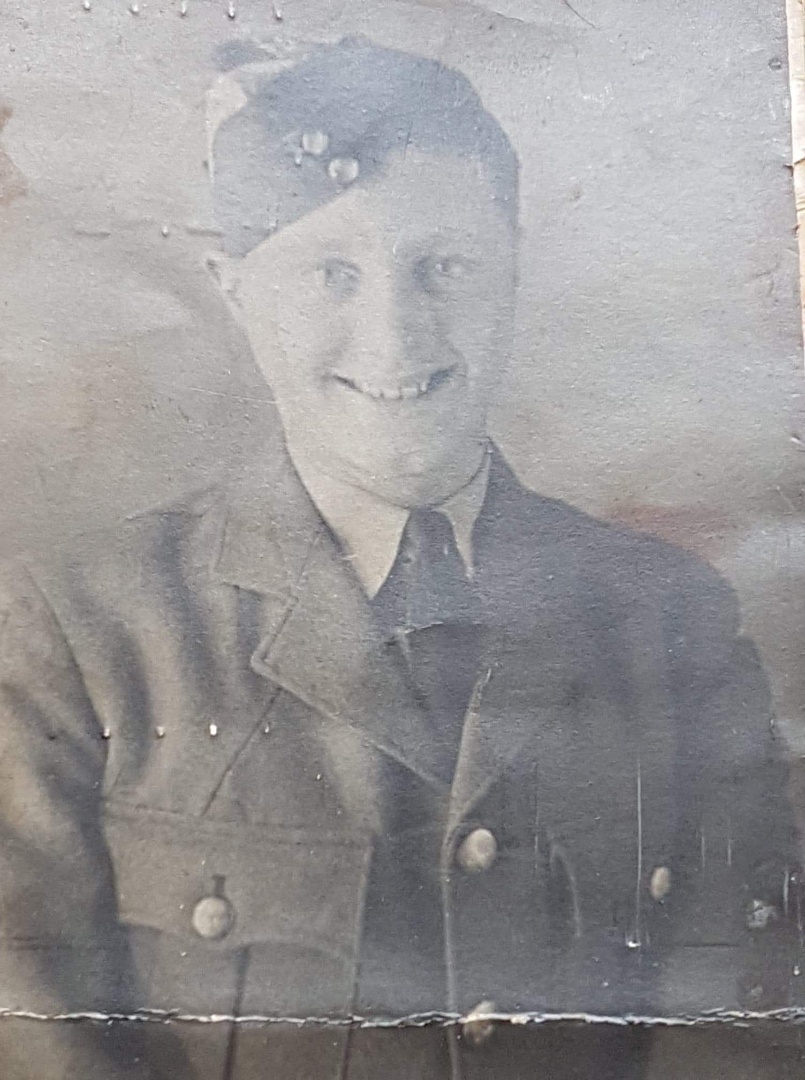Avro Anson, Off Co. Wexford, April 1944
The 25th of April 1944 would witness yet another sadly
unexplained loss of an Allied training aircraft close to the
coast of Ireland.
That afternoon, an aircraft was observed off the coast at Irish
Army Look Out Post (LOP) #12 at Ballyconnigar Hill between
Cahore and Curracloe. It was recorded as flying inland and
the Gardai at Castlebridge reported an aircraft overhead and
flying east. The Coastwatchers at LOP #13 at Greenore
Point, minutes later recorded an aircraft as having "suddenly
spiraled into the sea" 1 1/2 miles north of the Tuskar Rock
lighthouse.
RAF Historian Ross McNeill kindly transcribed the following
entries from the RNLI Records of Service
on a thread of the RAFCommands forum. The RNLI records
cannot be accessed online but can be seen by appointment and a
donation to the service is always welcome.
APRIL 25TH. - ROSSLARE HARBOUR, CO.
WEXFORD.
At 2.40 in the afternoon the Greenore military look-out
post reported that an aeroplane had crashed in the sea about
a mile north of Tuskar Rock Lighthouse. Messages were also
received from the Life-Saving Service, Dublin, and the Air
Defence Department. After the first message a fishing boat
was seen going in the direction of the accident. The weather
was clear and the sea calm, with a light north-west wind.
After the second message the motor life-boat Mabel Marion
Thompson went out, leaving at 3.25, with the secretary, Mr.
W. J. B. Moncas, on board. She met the fishing boat and took
on board a dead body, which the skipper said was the only
one to come to the
surface after the crash, and landed it at Rosslare pier
at five o’clock. - Partly paid permanent crew. - Rewards, £1
6s.
(See Rosslare Harbour, Services by
Shore-boats, page 57, RNLI Records of Service 1939-46)
ROSSLARE HARBOUR, Co. WEXFORD.
The motor fishing boat Lake of Shadows was fishing near the
Tuskar Rock on the afternoon of the 25th of April, 1944,
when at 2.35
her crew saw a British aeroplane crash in the sea about one
mile north of the Tuskar Rock. The weather was calm. The
fishing boat was
about three-quarters of a mile away. She went at once to the
aeroplane and found a body, which she took on board. She
made for Rosslare Harbour, but at four o’clock met the
Rosslare Harbour life-boat, and transferred the body to her.
- Rewards, £1 17s. 6d., with £4 for loss of fishing and 4s.
6d. for fuel used.
(See Rosslare Harbour, Accounts of Services by Life-boats, page
20; RNLI Records of Service 1939-46)
The casualty file for one of the Australian crew members
contains a copy of an Air Ministry Form 765, Report on Flying
Accident or Forced Landing Not Attributable to Enemy
Action. It was signed off by the Commander of 10 Radio
School on the 1st May 1944. In its description of accident
it records:
The aircraft took off on a 3 hour W/T
training exercise from Carew Cheriton at 1357 hours on 25th
April, 1944. At 1500 hours a fit was obtained 52
10'N.06 05'W. Nothing further was heard from the
aircraft. The body of A.C. Carr was picked up by the
Rosslare lifeboat at 1530 (G.M.T) hrs. All other
information is second hand and probably unreliable, as
communications with Eire are unsatisfactory.
Appropriate overdue action was taken with 10 Group.
N.B. There is an unconfirmed
report from the Eire authorities that an aircraft was seen
to dive into the sea from 4000 ft., the time being probably
1516 hours, at a position 4 miles S.E. of Greenore Point and
1 mile north of Tuskar Rock.
The body recovered was that of a Ronald R Carr, his death being
recorded in the Broadway Registration District of Wexford
following an inquest held on 1st May 1944.
The crew and aircraft had come from the RAF station at Carew
Cheriton in Pembrokshire, Wales between Milford Haven and
Tenby. This was at that time home to No 10 Radio School,
which was a training establishment where wireless telegraphy
(W/T) was taught to Wireless Operators (W/OP) who would go on to
fly on multi-engined aircraft with Bomber, Coastal and Transport
Commands. It used the twin engine Avro Anson and Airspeed
Oxford in this role.
The Form 765 for this loss lists the crew as Pilot, F/Lt R I
Johnson, 1st and 2nd Pupil W/OP F/Sgt.'s R J Tudehope and S J H
Young along with passenger AC2 R R Carr.
Both Tudehope and Young were members of the Royal Australian
Air Force (RAAF).
 The
pilot of the aircraft, Flying Officer Robert Irvine JOHNSON
was born in March 1921 in Belfast to Gladys Olivia and Robert
Bannon Johnson. He went by the name R Irvine Johnson,
including on some RAF records. He appears to be named
extensively in Belfast Rugby newspaper notices up to early 1941
due to him being a member of the Collegians Club.
The
pilot of the aircraft, Flying Officer Robert Irvine JOHNSON
was born in March 1921 in Belfast to Gladys Olivia and Robert
Bannon Johnson. He went by the name R Irvine Johnson,
including on some RAF records. He appears to be named
extensively in Belfast Rugby newspaper notices up to early 1941
due to him being a member of the Collegians Club.
The photo of Robert provided on this page shows him as a
teenager.
The Belfast Telegraph on 2nd May 1944 published the following
family notice about Irvine:
MISSING FLIGHT LIEUTENANT.
WIRE HE NEVER GOT.
Flt.-Lieut. R. Irvine Johnson, eldest son of Mr and Mrs.
Robt. B. Johnson, 66 Myrtlefield Park, Belfast, has been
reported missing believed killed last month as a result of
an accident. Educated at the Methodist College Lieut.
Johnson, aged 23, for a short period was engaged in the
family business (Messrs. Thos. Johnson and Sons. Ltd..
Bedford Street) but on the outbreak of war joined up. His
commission came through so recently that the gallant young
officer had not learned of it, nor received the telegram of
congratulations from his parents. Flt.-Lieut Johnson, who
was noted for the amiability of his disposition, had won a
name for himself as an athlete. He played Rugby for his
school and for Collegians Club. He was Scout Master of the
40th Troop Boy Scouts (M'Cracken Memorial). He saw active
service in Burma and was invalided home for a period but
returned to service a short time ago. His brother. G. M.
Johnson, who was through the thick of the North African
campaign, is serving with the Royal Irish Fusiliers. Another
brother Brian, is a pupil at "Inst." At Monday's meeting of
Belfast Rotary Club sympathy was expressed with Rotarian R.
B. Johnson on the distressing news.
His promotion from the commissioned rank of Flying Officer to
Flight Lieutenant was published in the London Gazette on 25 Feb
1944. He had received his commission as an officer back in
1942. The only operational history of his service
discovered so far is his arrival in 36 Squadron at Tanjore,
India on 16 December 1942 with a Wellington bomber and
crew. The unit was not operational at that time, having
only been reformed in October. While the ORB is hand
written, names and serial numbers of pilots are recorded, but
the only mentions are the posting out and return of P/O Johnson
and crew between 4th and 6th January 1943 on temporary
duty. No other mention of him is found.
The Belfast News Letter dated 11 Dec 1944 carried the following death notice:
FLT.-LIEUT. R. I. JOHNSON
Mr. and Mrs. Robert B. Johnson, 66, Myrtlefleld Park.
Belfast, have received official intimation that their eldest
son, Flight-Lieut. R. Irvine Johnson, previously reported
missing, believed killed, is now presumed killed on active
service. He was educated at Methodist College, and, until
joining the R.A.F.V.R., was engaged in the family firm,
Messrs. Thomas Johnson Sons, Ltd., Bedford Street. His two
brothers are in the Services.
Due to the fact that his remains were never recovered, he is
named on the Runnymede Memorial in Surrey.
The remaining crew members were two Australian Flight Sergeants,
both wireless operators under taking training.

F/Sgt Sydney James Herbert YOUNG 424503 hailed from
Annandale, Sydney, Australia, having been born there in
September 1923. His parents are recorded as being Herbert
Lionel and Eleanor Adeline Young. It is noted that he gave
no details of his father in his service record and his mother
was his only next of kin provided for, though a Miss Joy Evans
from Manlay, New South Wales was also named as a contact in
event of Emergency. prior to joining the services in 1942
he worked as a Telephone operator with the General Post Office
in Sydney. His initial training including trade training
in aerial gunnery and wireless telegraphy were conducted in
Australia.
Young had arrived in the UK on the 10 Sep 1943 and then passed
through a succession of Radio Schools before ending up at 10
Radio School.
The Sydney Morning Herald of Tuesday, 25 April 1946 carried the following remembrance notice:
YOUNG- Flt.-Sgt. Sydney J. H.,
R.A.A.F., attached Coastal Command, R.A.F., previously
reported missing, now presumed to have lost his life over
St. George's Channel April 25, 1944, dearly loved son of
Eleanor Young, aged 20 years, loved brother of Joy (Mrs
Hancox), Lionel, Iris (deceased), Una (Mrs Pearce), of 44
Weston Street, Dulwich Hill. So dearly loved, so sadly
missed.

F/Sgt Reginald James TUDEHOPE, 424479 born in Sydney in
July 1919 to James Alfred and Mabel Tudehope.
His brother, James Robert Tudehope served with 576 Squadron
as a navigator
 Ronald Richard Carr was born on 14 May
1925 to Richard and Violet Carr in Devonport, Devon, the couples
only child. They are found resident in the 1939 register
at 3 York Street, in Devonport, Plymouth. His father was
listed as a labourer in the local shipyards while Ronald was
listed as a Van Boy. His remains, at least, having been
recovered could be returned to his parents for burial. He
is listed on the aircraft records as flying as a passenger and
at times he is listed as being a Cadet rank. He is buried
in the rural cemetery of St Wenna's Church in Morval,
Cornwall. He also is listed on the Morval War
Memorial. With the rank of AC2, or Aircraftman Second
Class, Ronald was not of flying aircrew rank and was on the
aircraft purely as a passenger. A war time friend of his,
a Vic Rogers sent by email in 200x his recollections of Ronald
and their time together at 10 RS. He explained that the
both of them had been allowed to occasionally fly on the
training missions.
Ronald Richard Carr was born on 14 May
1925 to Richard and Violet Carr in Devonport, Devon, the couples
only child. They are found resident in the 1939 register
at 3 York Street, in Devonport, Plymouth. His father was
listed as a labourer in the local shipyards while Ronald was
listed as a Van Boy. His remains, at least, having been
recovered could be returned to his parents for burial. He
is listed on the aircraft records as flying as a passenger and
at times he is listed as being a Cadet rank. He is buried
in the rural cemetery of St Wenna's Church in Morval,
Cornwall. He also is listed on the Morval War
Memorial. With the rank of AC2, or Aircraftman Second
Class, Ronald was not of flying aircrew rank and was on the
aircraft purely as a passenger. A war time friend of his,
a Vic Rogers sent by email in 200x his recollections of Ronald
and their time together at 10 RS. He explained that the
both of them had been allowed to occasionally fly on the
training missions.
Anson I serial number DJ639 was one of seven hundred aircraft
built by Avro between Dec 1941 and July 1942. Air Britains
book, the Anson file, lists only one previous operator of the
aircraft, that being 5 Air Observers School.
Compiled by Dennis Burke, 2023.
